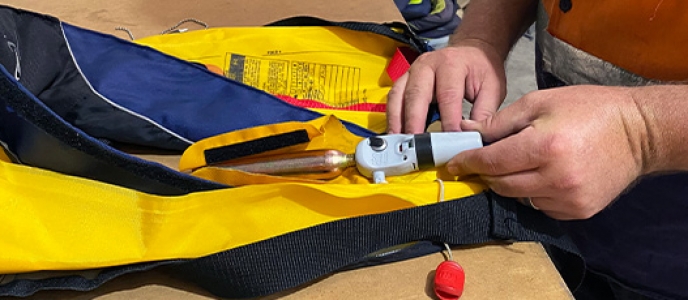9 November 2022
![How to care for your lifejacket]()

How to care for your lifejacket (and when to get a new one)
Inflatable life jackets are the preferred PFD (personal flotation device) for boating and fishing, including rock fishing. These are slim, comfortable jackets that inflate automatically once submerged in water. They will keep you afloat for hours and could well save your life. According to the law, you must wear a life jacket in most open water situations. In some areas, it is also mandatory while rock fishing. It is always better to be safe than sorry.
As life jackets are exposed to heat, sun and salt (all our favourite things when out on the water!), they can damage easily. Inflatable life jackets should be serviced once yearly, or in line with the manufacturer’s guidelines. This is a legal requirement in NSW if you are required to wear a life jacket for your work.
In this blog, we will explain how to take care of your inflatable life jacket and when to get a new one.
How to clean and store inflatable life jackets
- After use, remove the cartridge and rinse off the salt water (with fresh water)
- Check for any damage
- Reconnect the cartridge before storing
- Dry them off
- Store your life jackets in a dry, shaded and well-ventilated spot
- Keep them away from oil and fuel
- Never use a life jacket as a cushion or fender/bumper
- Never store new life jackets in their plastic wrapping.
How to check your inflatable life jacket before wearing
- Check there are no visible signs of wear and tear
- Check the CO2 cylinder is not pierced and is screwed in firmly
- For auto-inflating life jackets, check the auto-inflation cartridge is hand-tight and that it’s in date
- If the cartridge has expired, it must be replaced.
- Check the pull-cord is free and ready to be used.
Servicing your inflatable life jacket
Inflatable life jackets must be serviced yearly, or in accordance with the manufacturer’s instructions. The service will check if the bladder, inflation mechanism and CO2 cylinder are in good working order.
If you’ve had your life jacket for one year or less, it can be self-serviced. To self-service, follow the below steps:
- Check for visible wear and tear
- Inflate the bladder and check for pressure loss
- Deflate the bladder
- Remove and inspect the CO2 cylinder
- Repack the life jacket
- Record the date of self-service.
There is instructional information on how to follow each of these steps by Transport for NSW here.
Getting your inflatable life jacket professionally serviced
Once you’ve had the life jacket for one year, or after it has been inflated, it should be serviced at an authorised life jacket service centre.
The service will include thorough checks to ensure the bladder, reflective tapes, buckles and straps, inflation mechanism and C02 cylinder are in good working order.
Ovesco is a authorised life jacket service centre. Pop in or send us your PFDs and we will have them speedily tested and sent back to you with an official certification … or purchase a new one.
When do I need to buy a new life jacket?
When you get your existing life jackets serviced, you will be told if you require any new jackets. If your life jackets aren’t in good working order, they will need to be replaced.
Inflatable life jackets can last up to 10 years. However, if there are visible signs of wear and tear, they should be replaced. It also can’t hurt to have a spare.




